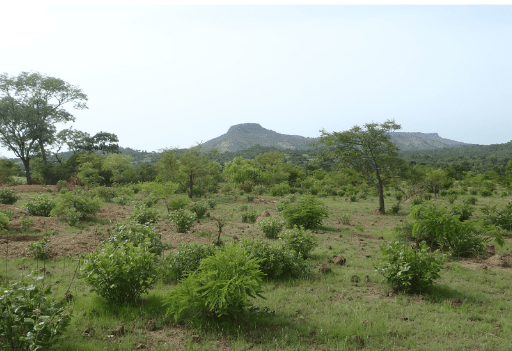News
The Simandou project: a landmark project for Guinea, and for Insuco!

We are conducting eight studies for the Simandou mining project in Guinea. The project consists of a mine to the east and a mining port to the west, linked by a 600km rail line that crosses the entire country – the Transguinéen. This project is historic for both Guinea and Insuco, as we already worked on it from 2012 to 2015.
Studies in progress: PAR, PEPP, PRMS, Recruitment Centre
The resettlement action plan (RAP), including the stakeholder engagement plan (PEPP) and the mine’s livelihood restoration plan (PRMS), marked the resumption of collaboration in October 2021. After some 2,500 ha of land inventoried, hundreds of surveys and several rounds of consultations conducted in the 9 impacted villages, we are currently completing the identification and development of projects to restore and improve the livelihoods of the PAPs.
In September 2022, we started inventories on the 70 km rail linking blocks 3 and 4 of the Simandou to the Transguinéen. Today, the entire railway branch line is covered by our surveys. We are continuing with inventories and socio-economic surveys of rail-related infrastructure. In November, we will begin consultations to draw up the Livelihood Restoration Plan (PRMS).
At the beginning of October, we launched a project to support Rio Tinto’s recruitment strategy. The aim is to propose a management tool that is adapted to the local context and effective in meeting its growing human resources needs.
Focus on Cultural Heritage missions
As part of the ESIA update, we are identifying and recording the tangible and intangible archaeological and cultural heritage resources located in the areas of influence of the mine, rail and port. Surveys in these areas have led to the identification of around a hundred sites and the discovery of historic archaeological sites, making it possible to reinforce data that was previously scarce. Following on from these studies, Rio Tinto asked us to support the implementation of management plans with the aim not only of preserving the cultural heritage of the impacted areas, but also of promoting this heritage nationally and internationally.
Among the many artefacts discovered in the three zones since the study began in May 2022, a few stand out:
- In June 2022, we reported the discovery of a stratigraphic site on the mine right-of-way. The discovery of such a unique site, with a large layer of sediment and artefacts in place, made it necessary to carry out additional drilling. We have just received the results of the carbon-14 dating of the site, which reveals that it dates back 8,000 years! This is an important discovery, as Palaeolithic (Stone Age) sites in stratigraphic context are virtually unknown in Guinea. We’re still a long way from having all the details, and archaeological digs will be necessary to find out more.
- A tumulus (a mound of earth and stones raised above one or more graves) has been discovered on the rail line. There is very little evidence of tumuli in West Africa, and even less in Guinea.
We are currently investigating the port area. So far, two archaeological sites have been discovered. The mission will continue in the dry season to cover the areas made inaccessible by the heavy rain and certain sites of archaeological importance that merit further analysis.
